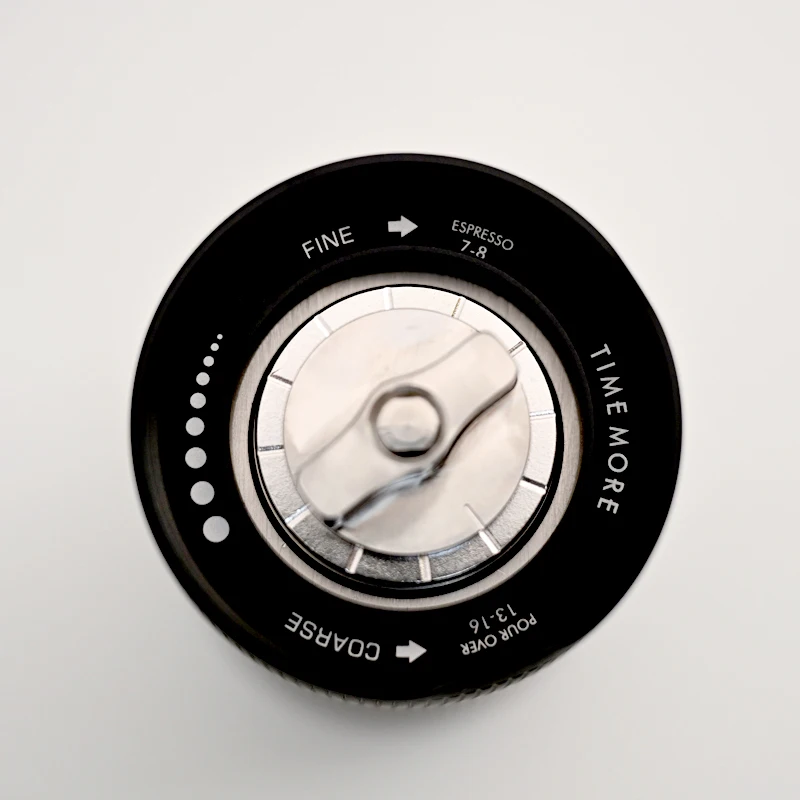What Makes a Coffee Mill Truly Portable for Travel?
The journey to finding your ideal travel coffee mill begins with understanding what “portability” truly means. While most people immediately think of size, genuine portability encompasses several key factors that determine how well a coffee grinder serves you on your adventures.
True portability is a careful balance of compact dimensions, lightweight construction, and rugged durability—all while maintaining the grinding quality that coffee enthusiasts demand. For travelers who refuse to compromise on their morning brew, understanding these elements is essential.
Fresh coffee while traveling isn’t just a luxury—it’s a sensory experience that can transform your trip. The difference between pre-ground coffee (which loses 60% of its aromatic compounds within 15 minutes of grinding) and freshly ground beans is dramatic. That rich aroma and complex flavor profile simply can’t be replicated with coffee that’s been ground days or weeks earlier.
The core characteristics that define a truly portable coffee mill include:
- Compact size: Must fit comfortably in a backpack, suitcase, or even a large pocket
- Lightweight construction: Ideally under 12 ounces (340g) to avoid adding significant weight to travel gear
- Durable design: Able to withstand being jostled in luggage or backpacks
- Functional efficiency: Easy to use in varied environments (hotel rooms, campsites, etc.)
- Convenient features: Components that won’t easily get lost and require minimal setup
Finding the perfect balance between these factors presents a challenge. A grinder that’s extremely lightweight might sacrifice durability, while the most durable models could add unwanted bulk to your luggage.
Throughout this guide, we’ll explore how various travel coffee grinder options meet these criteria, helping you find your perfect travel companion for fresh coffee anywhere your adventures take you.
Essential Portability Factors: Size, Weight and Materials
When selecting a coffee mill for travel, the physical characteristics become critically important. Let’s examine how size, weight, and materials work together to create a truly travel-friendly coffee grinder.
Optimal Dimensions for Different Travel Types
The ideal dimensions for your portable coffee mill depend largely on your travel style:
- Backpacking/Ultralight Travel: Look for grinders under 6 inches (15 cm) in length and no more than 2 inches (5 cm) in diameter. Cylindrical shapes typically pack most efficiently.
- Car Camping/RV Travel: Size constraints are more forgiving, allowing for grinders up to 8 inches (20 cm) in length and 3 inches (7.5 cm) in diameter.
- Business Travel: Slim profile grinders that can slip into a briefcase or laptop bag are ideal—look for models under 7 inches (18 cm) in length with flat sides rather than completely cylindrical designs.
Weight Considerations
Weight becomes particularly noticeable when you’re carrying your gear for extended periods:
- Ultralight travelers: Target grinders under 8 ounces (227g)
- General travelers: Aim for 8-12 ounces (227-340g)
- Car/RV travelers: Can accommodate up to 16 ounces (454g)
Every ounce matters when you’re carrying your gear for miles. The difference between a 16-ounce (454g) grinder and an 8-ounce (227g) model might seem small, but combined with other gear, these differences compound quickly.
Material Choices: The Strength-to-Weight Equation
Different materials offer varying benefits for travel coffee mills:
| Material | Weight Profile | Durability | Travel Advantages |
|---|---|---|---|
| Stainless Steel | Medium-Heavy | Excellent | Extremely robust, resistant to denting, long-lasting |
| Aluminum | Light | Good | Excellent strength-to-weight ratio, resistant to corrosion |
| Reinforced Plastics | Very Light | Moderate | Lightest option, may flex under pressure |
| Ceramic Components | Varies | Excellent | Wear-resistant burrs, but can crack if dropped |
Many travelers prefer the durability of stainless steel manual coffee grinders for their exceptional resilience during travel. The extra ounce or two often pays dividends in longevity and performance reliability.
Space Efficiency in Packing
The shape of your grinder significantly impacts how easily it packs:
- Cylindrical grinders fit well in water bottle pockets or cup holders
- Rectangular designs maximize space efficiency in suitcases
- Grinders with removable handles save significant space
- Some models nest inside popular travel brewing devices like the AeroPress
Modern portable coffee hand grinders increasingly feature collapsible or folding components specifically designed for travelers. Folding handles, removable cranks, and modular designs can reduce packed size by 30-40% compared to fixed-component models.
When selecting your travel grinder, consider not just its dimensions when in use, but how efficiently it packs down when stowed away. This space-saving aspect can make a substantial difference in your overall packing strategy.
Durability Considerations for On-the-Go Grinding
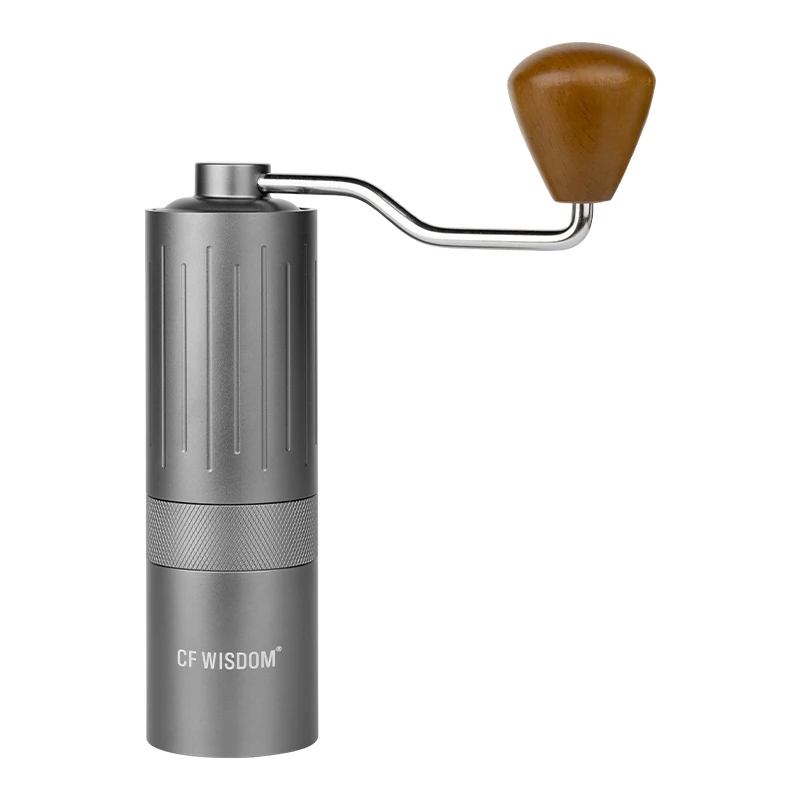
Travel subjects your coffee equipment to stresses that home grinders rarely encounter. From being compressed in overstuffed luggage to bouncing around in backpacks on rugged trails, travel coffee mills must withstand conditions that would quickly damage lesser equipment.
Travel-Specific Durability Requirements
When traveling, your coffee mill faces unique challenges:
- Impact resistance: Sudden drops onto hard surfaces
- Compression forces: Weight of other items pressing against it in luggage
- Temperature fluctuations: Moving between climate-controlled environments and the outdoors
- Humidity variations: From dry airplane cabins to humid tropical environments
- Vibration: Constant movement in vehicles or while being carried
These conditions demand thoughtful material choices and engineering considerations.
Material Analysis for Travel Scenarios
Different materials offer varying benefits for travel durability:
Stainless Steel: The gold standard for travel durability, resisting dents, scratches, and impacts. High-quality all-metal hand grinder options offer exceptional resilience but come with a weight penalty.
Aluminum: Offers excellent strength while remaining significantly lighter than stainless steel. Anodized aluminum provides additional protection against scratches and corrosion.
Reinforced Polymers: Modern engineered plastics can offer surprising durability while keeping weight minimal. Look for glass-filled nylon or polycarbonate components in areas not subject to grinding forces.
Combination Approaches: The most travel-friendly designs often use metal in critical structural areas while incorporating lighter materials elsewhere.
Protection Features That Enhance Durability
Many portable coffee mills include specialized features to enhance their travel durability:
- Protective cases: Hard or soft cases that shield the grinder from impacts
- Internal stabilizers: Components that prevent burrs from shifting during transport
- Shock-absorbing elements: Rubber or silicone components that absorb impact energy
- Sealed bearings: Protected mechanical elements that resist dust and moisture
Potential Weak Points to Evaluate
When assessing a coffee mill for travel, pay particular attention to:
- Connection points: How the handle attaches to the shaft (a common failure point)
- Adjustment mechanisms: Threads or clicking systems that can wear with repeated use
- Burr stability: How well the burrs maintain alignment when subjected to side loads
- Material transitions: Where different materials meet (potential stress concentration points)
The most travel-worthy coffee mills address these potential weak points with thoughtful engineering. Integrated designs with fewer separate components generally offer better durability than those with multiple detachable parts that can be lost or damaged.
A truly travel-ready coffee mill should survive being accidentally dropped from counter height onto a hard surface without suffering functional damage—a test that eliminates many home-focused grinders from consideration.
Manual vs. Electric: Power Source Considerations for Travelers
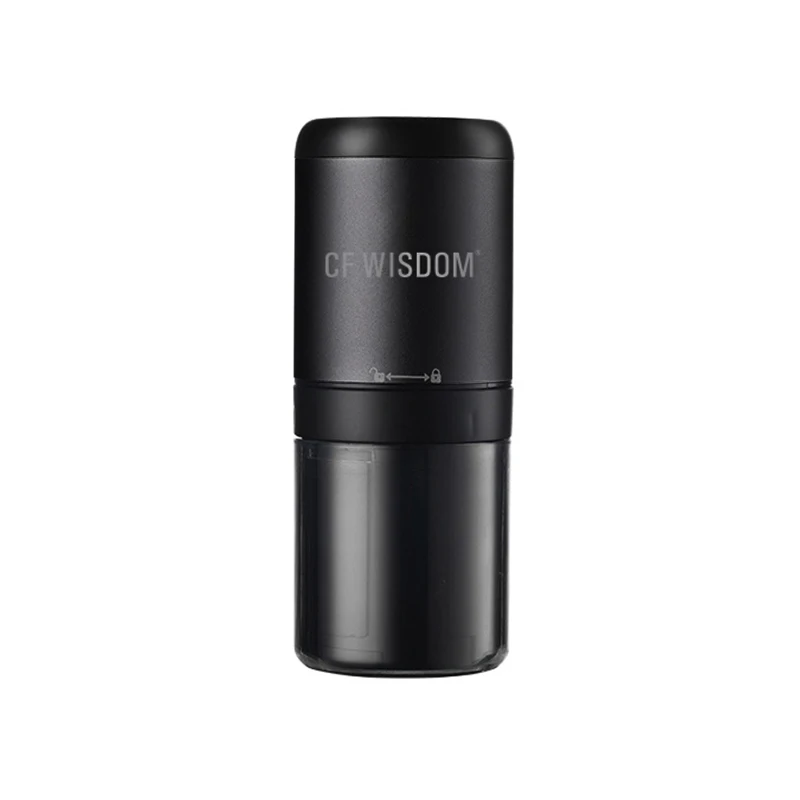
The choice between manual and electric coffee mills represents one of the most significant decisions for coffee-loving travelers. Each option offers distinct advantages and limitations that become magnified in travel contexts.
Manual Coffee Mills: The Self-Sufficient Choice
Manual grinders, particularly hand crank coffee grinder models, have long been favored by travelers for several compelling reasons:
Advantages:
* No power source required—works anywhere
* Generally more compact and lightweight
* Typically more durable with fewer failure points
* Often more affordable than quality electric options
* Silent operation (important in shared accommodations)
* Many offer excellent grind consistency
* Therapeutic manual process connects you to your coffee ritual
Disadvantages:
* Requires physical effort (typically 1-3 minutes of grinding per cup)
* Can be challenging for those with hand strength limitations
* Less efficient for preparing coffee for groups
* Some designs require awkward hand positions
Electric Coffee Mills: Speed and Convenience
Battery-powered portable grinders have improved dramatically in recent years, making them viable travel companions:
Advantages:
* Much faster grinding (typically 20-30 seconds per cup)
* Requires minimal physical effort
* More consistent results for espresso-fine grinds
* Easier to use for those with mobility limitations
* More efficient for preparing multiple servings
Disadvantages:
* Requires charging or battery replacement
* Added complexity means more potential failure points
* Generally heavier than comparable manual options
* Motor noise can be disruptive in shared spaces
* International travel requires adapter considerations
* Usually more expensive than manual alternatives
Travel-Specific Power Considerations
For electric grinder users, travel introduces several power-related challenges:
- Battery life: Most rechargeable models offer 5-10 grinding sessions per charge
- Charging options: USB-rechargeable models offer the most flexibility for travelers
- Voltage compatibility: Important for international travelers (look for 100-240V compatibility)
- Backup options: Some travelers carry a compact manual grinder as backup
Hybrid and Innovative Approaches
Some newer models blur the line between categories:
- Grinders with removable rechargeable battery modules
- Manual grinders with optional electric attachments
- Ultra-efficient manual designs requiring minimal effort
The majority of experienced travelers gravitate toward high-quality manual grinders for their reliability and independence from power sources. For travel-friendly coffee grinding options, the self-sufficiency of manual models often outweighs the convenience advantage of electric options.
Your choice ultimately depends on your specific travel style, destinations, and how many people you’ll be preparing coffee for during your journey.
Grinding Quality and Consistency: Portable Without Compromise
The primary purpose of any coffee grinder—portable or otherwise—is to produce a consistent grind that extracts the best flavor from your beans. While travel imposes certain constraints, modern portable mills can achieve impressive consistency that rivals home grinders.
How Portability Impacts Grinding Mechanism Design
The size limitations of portable grinders necessitate clever engineering solutions:
- Smaller burr sets (typically 30-48mm vs. 50-70mm in home grinders)
- More efficient cutting geometries to maintain quality despite size
- Stabilization systems that prevent burr wobble despite minimal housing
- Innovative bearing placements to maximize stability in compact forms
These design adaptations allow quality portable grinders to produce consistent results despite their travel-friendly dimensions.
Burr Types and Materials in Portable Grinders
The heart of any coffee mill is its grinding mechanism, with several options available in portable designs:
- Ceramic burrs: Lightweight and remain sharp longer, but more brittle
- Stainless steel burrs: More durable for travel, but may need replacement sooner
- Titanium-coated burrs: Excellent durability but add cost
- Conical vs. flat burrs: Most portable grinders use conical burrs for space efficiency
Many travelers prefer ceramic burr coffee grinder options for their weight advantage and excellent edge retention. However, those prioritizing ruggedness often opt for steel burrs that can better withstand being dropped or compressed in luggage.
Adjustability Ranges for Travel Brewing Methods
Quality portable grinders offer adjustment capabilities to accommodate various brewing methods:
- French Press/Cold Brew: Coarse settings (typically 10-15 clicks on adjustable grinders)
- Pour-over/Drip: Medium settings (typically 6-10 clicks)
- AeroPress: Medium-fine settings (typically 4-7 clicks)
- Moka Pot: Fine settings (typically 3-5 clicks)
- Espresso: Very fine settings (typically 1-3 clicks)
The ability to consistently reproduce these settings becomes particularly important while traveling, where changing water qualities and brewing conditions already introduce variables. Many travelers refer to specific espresso grind size charts to maintain consistency across different environments.
Stability During Travel Grinding
One challenge unique to travel grinding is the lack of a stable platform. When grinding at home, your counter provides stability, but travelers often grind in hotel rooms, at campsites, or even on transportation.
Features that enhance stability for travel grinding include:
- Non-slip bases or gripping surfaces
- Wider bases relative to height
- Ergonomic gripping areas
- Smooth-turning mechanisms requiring less force
The best portable mills allow you to achieve a quality grind without needing to brace the grinder against a table or counter—an important consideration when you might be grinding coffee in varied environments.
Capacity and Efficiency: How Much Coffee Can You Grind on the Go?
When traveling, the ideal capacity of your coffee mill balances efficiency with portability. Too small, and you’ll spend excessive time grinding for multiple cups; too large, and you’re carrying unnecessary weight and bulk.
Typical Capacity Ranges in Portable Grinders
Most portable coffee mills fall within these capacity ranges:
| Category | Typical Capacity | Cups of Coffee | Best For |
|---|---|---|---|
| Ultracompact | 15-20g (0.5-0.7oz) | 1 cup | Solo ultralight travel |
| Standard Travel | 20-30g (0.7-1oz) | 1-2 cups | Individual travelers |
| Large Travel | 30-50g (1-1.8oz) | 2-3 cups | Couples/small groups |
| Expedition Size | 50-80g (1.8-2.8oz) | 3-5 cups | Group travel |
For context, a typical single cup of coffee requires about 15-18g of ground coffee, while a strong double espresso uses around 18-20g.
How Capacity Affects Overall Size and Portability
Capacity directly impacts a grinder’s dimensions. While a 30g capacity grinder might be 6 inches tall, a 60g model from the same manufacturer could be 8-9 inches tall. This seemingly small difference can significantly affect packability, especially in compact luggage.
Many travelers opt for compact coffee mill options that prioritize small dimensions over large capacity, preferring to grind in batches if preparing coffee for multiple people.
Time Efficiency Considerations
Grinding time increases roughly proportionally with capacity:
- Manual grinders: Approximately 30-45 seconds per 15g of coffee
- Electric portable grinders: Approximately 10-15 seconds per 15g of coffee
For solo travelers, the time investment is minimal. However, for those preparing coffee for groups, grinding time becomes a more significant consideration. Some travelers pre-grind coffee just before departing for day trips to avoid spending time grinding at their destination.
Practical Considerations for Group Travel
When traveling with companions who also enjoy fresh coffee, consider:
- Taking turns with grinding duties
- Bringing a higher-capacity grinder despite the weight penalty
- Using grinding time as part of your coffee ritual and social experience
- For larger groups, packing pre-weighed bean portions to streamline the process
The capacity choice ultimately depends on your typical travel group size and how integral the grinding process is to your coffee experience.
Practical Travel Considerations: Usability and Maintenance on the Road
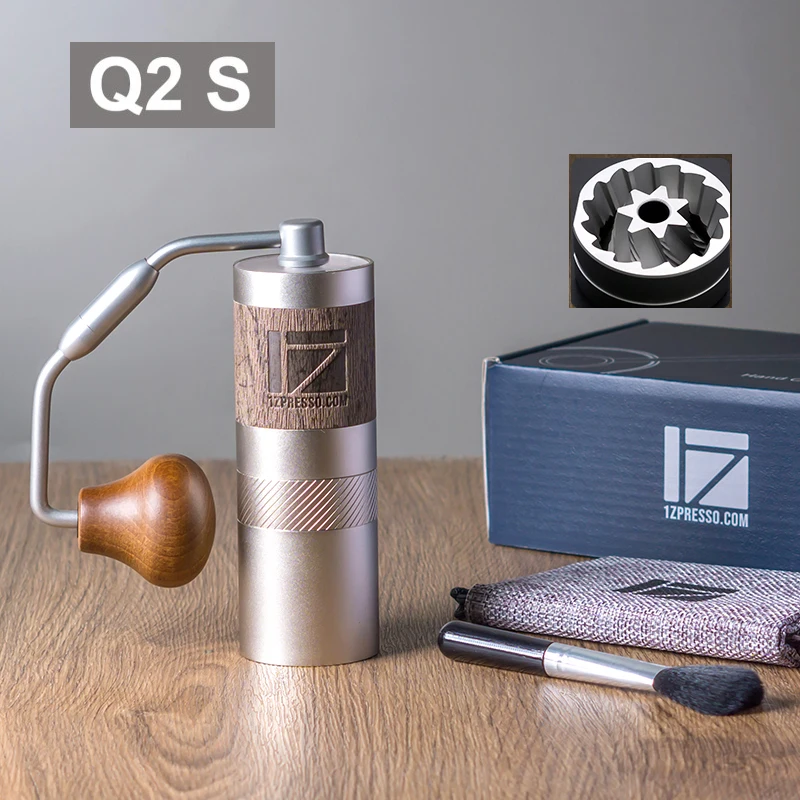
The realities of using and maintaining your coffee mill while traveling introduce unique challenges that aren’t apparent when evaluating grinders at home.
Assembly and Disassembly in Travel Conditions
The ability to quickly and easily assemble, disassemble, and clean your grinder becomes magnified during travel:
- Look for designs with minimal separate parts
- Avoid grinders with small components that could be easily dropped or lost
- Thread designs that won’t cross-thread when reassembled in hurried conditions
- Tool-free disassembly is highly advantageous while traveling
Some premium travel grinders can be disassembled for cleaning in under 30 seconds without tools—a valuable feature when you’re working with limited time and facilities.
Cleaning Requirements While Traveling
Maintaining your grinder on the road presents unique challenges:
- Limited access to running water in some locations
- Restricted time for thorough cleaning during tight travel schedules
- Risk of losing small parts during cleaning
- Limited drying options in humid environments
Experienced travelers develop efficient maintaining manual coffee grinders routines that work within these constraints:
- Using a small brush to sweep out coffee particles
- Carrying cleaning tablets specifically formulated for coffee grinders
- Utilizing microfiber cloths for quick wipe-downs
- Periodic dry-grinding of rice or specialized cleaning pellets when soap and water aren’t available
Storage of Grounds During Transport
Some travel grinders include features specifically for travelers who might grind in one location but brew later:
- Caps for both ends to store ground coffee temporarily
- Integrated airtight containers
- Compatible storage accessories designed to attach to the grinder
These features are particularly valuable for hikers and campers who might grind coffee at camp and carry it for brewing during day excursions.
Airport Security Considerations
Coffee mills can sometimes raise questions at security checkpoints:
- Manual grinders are generally permitted in carry-on luggage
- Grinders with sharp burrs occasionally trigger additional inspection
- Electric grinders with lithium batteries must follow battery regulations
- Consider the potential for disassembly during inspection
Experienced travelers recommend carrying your grinder in an easily accessible part of your luggage and being prepared to explain its purpose to security personnel unfamiliar with specialty coffee equipment.
Noise Considerations in Shared Accommodations
The sound of grinding coffee can be surprisingly loud in quiet environments:
- Manual grinders are generally quieter than electric models
- Some manual designs incorporate sound-dampening features
- Consider grinding location and timing when staying in shared spaces
- Early-morning grinding might need to happen in bathrooms or hallways to avoid disturbing travel companions
Understanding the proper mastering espresso grind size becomes particularly important during travel, as you’ll want to minimize regrinding due to incorrect settings—especially in noise-sensitive environments.
Travel Scenarios: Matching Mills to Your Adventure Style
Different travel styles create vastly different demands on your coffee equipment. Finding the right match for your specific adventures ensures your morning brew enhances rather than complicates your journey.
Backpacking and Ultralight Adventures
For those counting every ounce and cubic inch of pack space:
Priority features:
* Minimum weight (under 10oz/280g)
* Compact dimensions
* Exceptional durability
* No power requirements
* Weather resistance
Potential compromises:
* Smaller capacity (single-serve)
* Slightly longer grinding time
* Limited adjustment range
Ultralight travelers often select minimalist aluminum or titanium manual grinders with simplified adjustment mechanisms and focus on durability over refinement features.
Car Camping and RV Travel
With less severe space and weight constraints:
Priority features:
* Larger capacity for group brewing
* Potentially electric options (12V or rechargeable)
* Stability for use on varied surfaces
* Storage for multiple doses
* Durability for outdoor conditions
Potential advantages:
* Can accommodate larger, higher-performance grinders
* Electric options become viable with power access
* Storage concerns are minimized
Many car campers prefer larger manual grinders or even compact electric models that offer faster grinding for group brewing situations.
Business Travel and Hotel Stays
For the coffee enthusiast who travels for work:
Priority features:
* Professional appearance
* Quiet operation
* Quick setup/cleanup
* Packability in briefcase or carry-on
* Low maintenance requirements
Specific considerations:
* Grinding early morning in hotel rooms
* Limited cleaning facilities
* Need for professional presentation
* Time efficiency during busy schedules
Business travelers often gravitate toward premium compact manual grinders with quick-cleaning features and professional aesthetics.
International Travel
When crossing borders and navigating different environments:
Priority features:
* Universal compatibility (no voltage concerns)
* Exceptional durability
* Self-sufficiency (manual operation)
* TSA and international security compliance
* Low-maintenance design
Specific considerations:
* Power availability and compatibility
* Language barriers when explaining equipment
* Varying coffee bean availability
* Climate differences affecting grind settings
Most international travelers prefer manual grinders for their reliability and independence from power sources, focusing on models with proven durability records.
Understanding how to adjust your espresso grind settings perfect shot becomes particularly valuable during international travel, where bean freshness, humidity, and elevation can all affect your optimal grind size.
The most versatile travel mills allow for mastering grind definitive guide techniques that can adapt to different brewing methods as your travel situation changes—particularly valuable when your preferred brewing method might not be available.
Top Portable Coffee Mills for Different Travel Needs
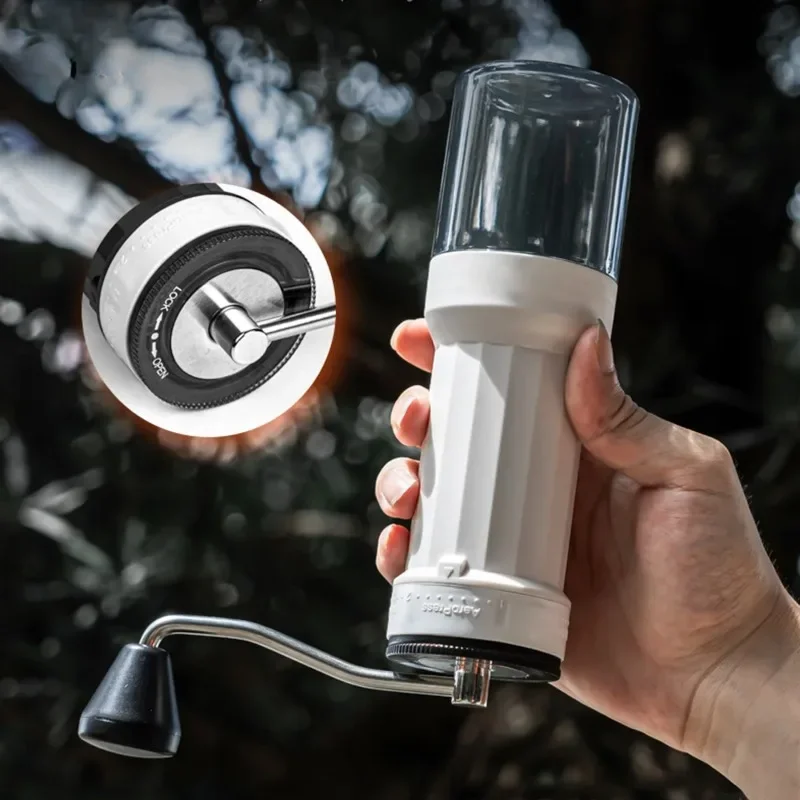
After examining all the key factors that make coffee mills travel-worthy, let’s explore some outstanding options across different categories. These selections represent the balance of portability, performance, and durability that travelers need.
Best Overall Portable Manual Coffee Mills
These grinders excel across all major travel criteria—offering excellent grind consistency, reasonable weight, durable construction, and user-friendly features:
- Key features to look for: Full metal construction, stabilized burrs, comfortable grip areas, and reliable adjustment mechanisms
- Weight range: 10-14oz (280-396g)
- Material highlights: Aircraft-grade aluminum or 304 stainless steel bodies with hardened steel burrs
- Best use case: General travel where quality and durability take precedence over absolute minimum weight
Most Compact and Ultralight Options
When every gram and cubic centimeter matters:
- Key features: Minimalist design, essential functions only, simplified adjustment
- Weight range: 6-9oz (170-255g)
- Material highlights: Lightweight aluminum, selective use of high-strength plastics
- Best use case: Backpacking, ultralight travel, and minimalist adventures
- Compromise areas: Usually smaller capacity and slightly less grind consistency
Best Portable Electric Options
For those who prioritize speed and convenience:
- Key features: USB-C rechargeable batteries, compact motors, quiet operation
- Weight range: 14-18oz (396-510g)
- Battery performance: 5-8 grinds per charge
- Best use case: Travel with reliable power access, business travel, or group trips
- Compromise areas: Requires charging, more moving parts that could fail
Budget-Friendly Travel Mills
Quality options that won’t break the bank:
- Key features: Simpler designs, good fundamental grinding capability, lighter but less premium materials
- Price range: More affordable than premium models
- Best use case: Occasional travelers, those new to freshly ground coffee, backup grinders
- Compromise areas: Generally less refined adjustment mechanisms and potentially shorter lifespan
Special Category: Integrated Brewing Grinders
Innovative designs that combine grinding and brewing:
- Key features: Grinders that fit inside or attach directly to brewing devices
- System weight savings: Often 20-30% lighter than separate components
- Best use case: Ultralight travelers who want a complete system with minimum weight/space
- Compromise areas: Usually specialized to one brewing method
For travelers focused specifically on espresso preparation, manual coffee grinder for espresso options provide the fine adjustment capabilities and stability needed for consistent espresso grinding. These specialized grinders feature reinforced burrs and fine adjustment mechanisms specifically designed for the demands of espresso preparation.
Fine Adjustment Hand Grinder, Precision Manual Grinder, Travel Coffee Grinder
Price range: $185.11 through $494.63 Select options This product has multiple variants. The options may be chosen on the product pageHand Burr Grinder, Hand Crank Coffee Grinder, Manual Espresso Grinder, Portable Coffee Grinder
Price range: $262.72 through $300.22 Select options This product has multiple variants. The options may be chosen on the product pageManual Burr Mill, Manual Coffee Grinder Stainless Steel, Manual Coffee Mill Grinder, Mechanical Coffee Grinder
Price range: $127.26 through $130.32 Select options This product has multiple variants. The options may be chosen on the product pageHand Burr Grinder, Manual Coffee Grinder Stainless Steel, Precision Manual Grinder
Price range: $183.64 through $187.52 Select options This product has multiple variants. The options may be chosen on the product page
The optimal choice depends heavily on your specific travel style and priorities. Ultralight backpackers might gravitate toward minimalist handheld coffee grinder options, while those primarily staying in accommodations with power access might prefer the speed of compact electric models.
Comparison: The Most Portable Coffee Mills Head-to-Head
When evaluating the most travel-worthy coffee mills side by side, several key differences emerge that can help guide your selection based on your specific priorities.
Direct Comparison of Key Portability Metrics
| Feature Category | Ultralight Manual | Premium Manual | Compact Electric | Integrated Systems |
|---|---|---|---|---|
| Weight Range | 6-9oz (170-255g) | 10-14oz (280-396g) | 14-18oz (396-510g) | 8-12oz (227-340g) |
| Packed Dimensions | Very Compact | Compact | Medium | Most Compact |
| Grinding Speed | Slow-Medium | Medium | Fast | Medium |
| Grind Consistency | Good | Excellent | Very Good | Good |
| Durability | Good | Excellent | Moderate | Good |
| Power Independence | Complete | Complete | Requires Charging | Complete |
| Capacity | Small (15-20g) | Medium (20-35g) | Medium-Large (30-40g) | Small (15-25g) |
| Cleaning Ease | Moderate | Easy-Moderate | Challenging | Varies |
Standout Travel Features
Each category offers unique advantages for travelers:
- Ultralight Manual: Minimal weight penalty, often feature collapsible components
- Premium Manual: Superior construction quality, excellent stability during grinding, longer lifespan
- Compact Electric: Effortless grinding, consistent results with minimal physical effort
- Integrated Systems: Maximum space efficiency, purpose-built for specific brewing methods
Trade-offs Between Design Approaches
Understanding the compromises helps match grinders to your priorities:
- Weight vs. Capacity: Lighter grinders almost always have smaller capacities
- Simplicity vs. Adjustment Range: More travel-friendly designs often have fewer grind settings
- Materials vs. Weight: The most durable materials (stainless steel) add weight
- Manual vs. Electric: Independence from power sources vs. grinding convenience
For travelers seeking the perfect balance, understanding manual automatic espresso grinder settings can help determine whether a manual grinder will meet your specific needs or if an electric option would be better suited to your brewing style.
When selecting your ideal travel companion, consider which factors matter most for your specific travel style. An ultralight backpacker might willingly sacrifice some grind consistency for weight savings, while a business traveler might prioritize speed and convenience over absolute portability.
Expert Tips: Optimizing Your Travel Coffee Mill Experience
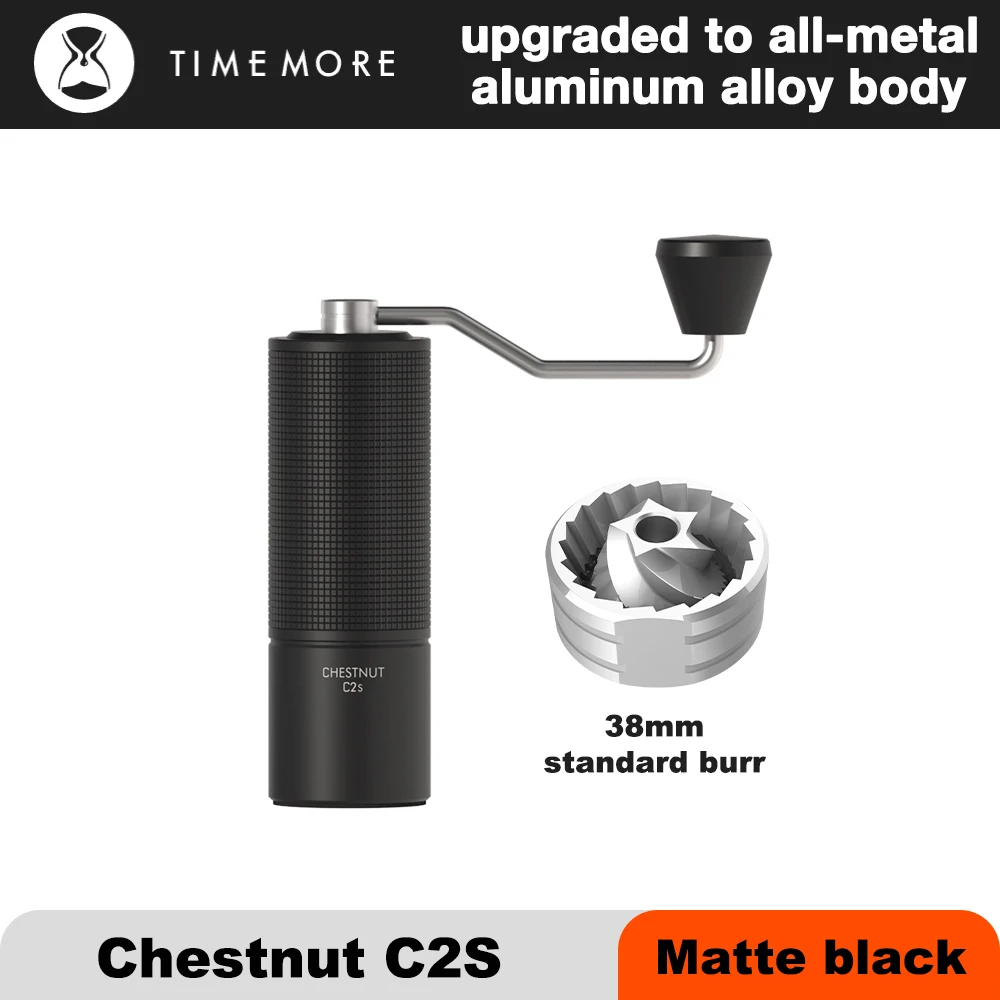
After years of helping coffee enthusiasts find their ideal travel grinding solutions at Savor Suite, we’ve gathered these expert tips to enhance your experience:
1. Protective Packing Techniques
Keep your grinder safe during transit with these approaches:
- Wrap manual grinders in socks or soft clothing items
- Store inside water bottles or travel mugs for double protection
- Remove handles and store separately when possible
- For premium grinders, use the original protective case or pouch
- Position in luggage away from hard or heavy items
2. Pre-Weigh for Efficiency
Streamline your travel brewing routine:
- Pre-weigh coffee doses into small silicone bags or containers
- Label doses for different brewing methods if you use various techniques
- Consider single-dose coffee containers designed for travelers
- For longer trips, vacuum-seal individual portions to maintain freshness
3. Complementary Equipment Strategies
Create an efficient travel coffee kit:
- Choose brewing equipment that nests together with your grinder
- Standardize filter sizes across different brewing methods
- Consider multi-purpose tools (measuring scoops that double as clips)
- Select brewing methods with minimal separate components
4. Field Maintenance Shortcuts
Keep your grinder performing optimally with minimal resources:
- Carry a small dedicated brush for quick cleaning
- Use bread pieces to absorb oils when water isn’t available
- Pack a few grinder cleaning tablets for periodic deep cleaning
- Disassemble and air-dry thoroughly in humid environments to prevent burr corrosion
5. Multi-Purpose Considerations
Maximize the utility of your travel coffee equipment:
- Some grinder handles can double as brewing stirrers
- Storage chambers can hold more than just coffee (spices, tea, etc.)
- Protective cases might store other small items when the grinder is in use
- Manual grinders can process small amounts of spices or dried herbs
6. Dialing in Grind Settings
Maintain consistency despite changing environments:
- Document specific click settings for your preferred brewing methods
- Understand how to achieve the perfect grind setting espresso even as conditions change
- Adjust slightly finer in high-humidity environments
- Consider the 30 second espresso rule complete guide to calibrate espresso grinds while traveling
7. Airport Security Navigation
Minimize hassle when traveling with coffee equipment:
- Keep your grinder easily accessible for inspection
- Consider disassembling complex grinders before security checks
- Be prepared to explain what the device is to unfamiliar security personnel
- Check lithium battery regulations for electric grinders
These practical tips can transform your travel coffee experience from a compromise into a highlight of your journey. The right approach allows you to enjoy cafe-quality coffee even in the most remote locations.
Answering Your Questions: Travel Coffee Mill FAQ
Throughout our time at Savor Suite helping customers find their ideal travel coffee solution, certain questions arise consistently. Here are answers to the most common inquiries about portable coffee mills:
How much quality am I sacrificing with a travel grinder versus a home grinder?
With premium travel grinders, remarkably little. While larger home grinders offer advantages in speed and capacity, the actual grind quality of top-tier portable mills can match or even exceed that of many home grinders. The main differences are grinding time and capacity rather than quality. The key is beyond numbers perfect espresso grind consistency, which good portable grinders can achieve despite their size.
Can I really make proper espresso with a portable grinder?
Yes, but with caveats. Premium manual travel grinders with specialized burrs and robust stabilization systems can produce espresso-suitable grinds. However, mastering perfect espresso adjust grind requires more effort with portable equipment. Look specifically for grinders that advertise espresso capability and feature fine adjustment mechanisms. The limiting factor is often the brewing device rather than the grinder.
How long does it take to grind coffee manually while traveling?
For a typical 15-18g single cup serving:
* Coarse grind (French Press): 30-45 seconds
* Medium grind (Pour Over): 45-60 seconds
* Fine grind (AeroPress): 60-90 seconds
* Espresso grind: 90-120 seconds
These times vary based on the specific grinder, bean hardness, and the user’s strength.
How do I clean my grinder while backpacking or camping?
When water is limited:
* Use a small brush to remove grounds
* Wipe accessible parts with a microfiber cloth
* Periodically grind a small amount of uncooked rice or specialized cleaning tablets
* Disassemble minimally and tap components to remove trapped grounds
* Full cleaning can wait until you return to facilities with water
Are electric travel grinders worth the extra weight?
For most travelers, no. The combination of extra weight, charging requirements, and potential failure points makes manual grinders more practical for most travel scenarios. However, electric models make sense for:
* Those with hand strength limitations
* Group travel where grinding volume is high
* Business travelers with reliable power access who prioritize time efficiency
How do altitude and humidity affect my grinder settings while traveling?
Both factors impact coffee extraction:
* Higher altitudes: Water boils at lower temperatures, often requiring slightly finer grinds
* High humidity: Beans absorb moisture, potentially needing slightly coarser grinds
* Low humidity: Extremely dry conditions may benefit from slightly finer grinds
Small adjustments of 1-2 setting increments are typically sufficient to compensate.
Can I bring my coffee grinder in my carry-on luggage?
Generally yes. Manual coffee grinders are permitted in carry-on luggage by most aviation authorities. Electric grinders with lithium batteries must follow specific battery regulations. Occasionally, security personnel unfamiliar with coffee grinders may request additional screening, so allow extra time if carrying your grinder in your cabin baggage.
Beyond Basic Portability: Advanced Features for Discerning Travelers
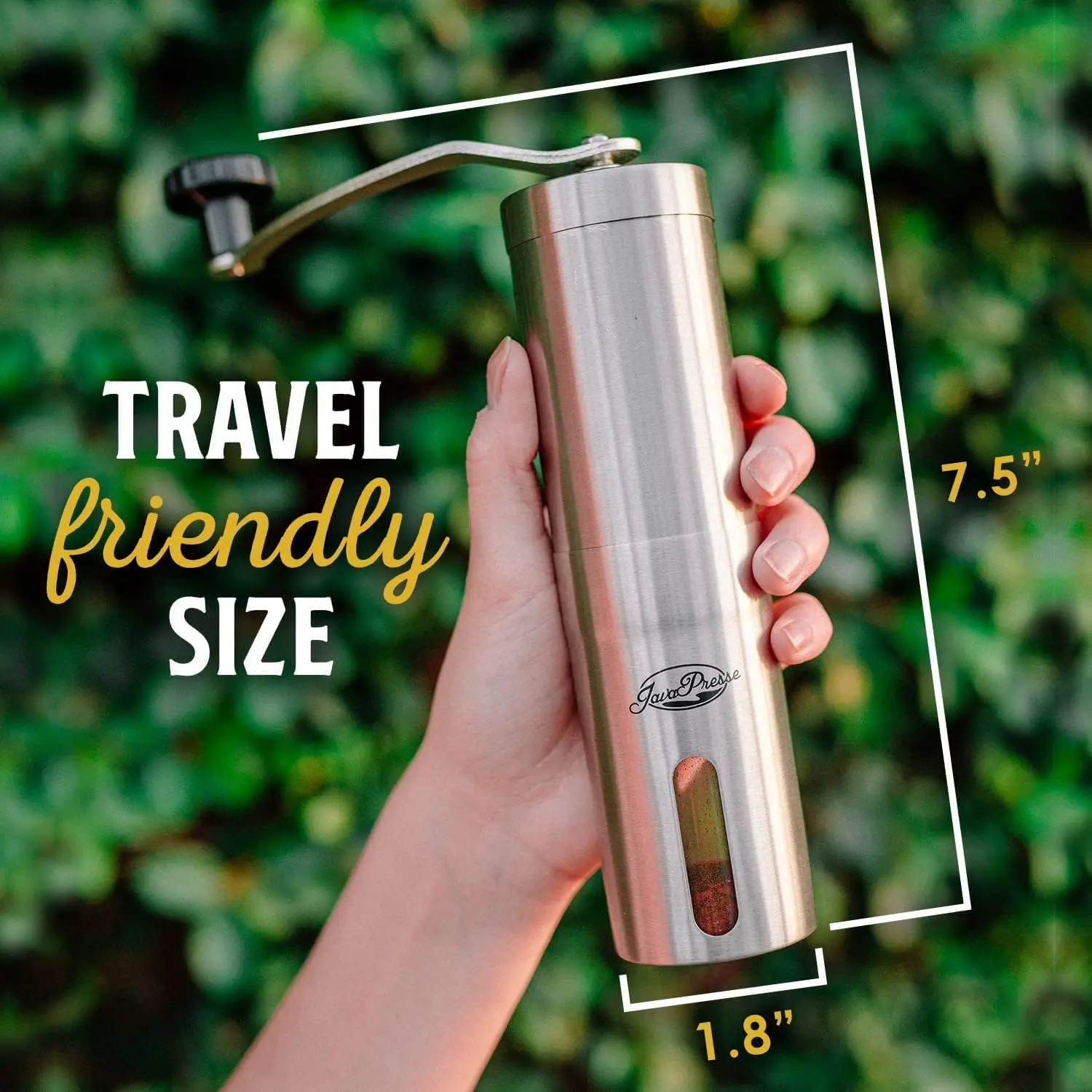
The world of portable coffee mills continues to evolve with innovative features that enhance the travel coffee experience beyond basic functionality. For discerning coffee enthusiasts who demand more from their equipment, these advanced capabilities offer compelling advantages.
Innovative Design Elements
Recent advancements in portable grinder design include:
- Magnetic component attachments: Eliminating threads that can wear out or cross-thread
- Quick-adjustment mechanisms: Allowing rapid switching between brewing methods
- Anti-static materials: Reducing mess and grounds retention during travel
- Convertible handles: Transforming from compact storage to extended use positions
- Guided alignment systems: Ensuring perfect burr alignment after reassembly
These design elements address specific pain points that travelers have historically faced with portable grinders.
Multifunctional Features
Modern travel grinders increasingly offer capabilities beyond simple grinding:
- Integrated scales for precise dosing
- Combination grinder-brewer systems
- Modular components that serve multiple purposes
- Attachments that adapt to different brewing methods
- Storage compartments for beans or accessories
For travelers seeking the ultimate in space efficiency, these multifunctional designs can replace several separate pieces of equipment.
Customization for Travel Scenarios
The most advanced precision manual grinder options now offer customization specifically for travel scenarios:
- Interchangeable burr sets for different brewing methods
- Adjustable capacities through modular chambers
- Conversion kits between manual and electric operation
- Travel-specific accessories like waterproof cases and attachment points
- Custom grip materials for wet or extreme conditions
These customization options allow travelers to tailor their grinders to specific journeys, from weekend road trips to extended international adventures.
Future Directions in Portable Grinding
Looking ahead, several emerging trends promise to further enhance travel coffee experiences:
- Smart grinders with app-controlled grinding profiles
- Advanced materials offering even better strength-to-weight ratios
- Hybrid power systems combining manual operation with power assistance
- Environmentally sustainable designs using recyclable or biodegradable components
- Integration with broader travel coffee ecosystems
The future of portable coffee grinding looks to combine traditional mechanical excellence with thoughtful technological enhancements that don’t compromise the fundamental portability that travelers require.
For the coffee enthusiast who refuses to compromise, these advanced features represent the cutting edge of what’s possible in portable grinding technology. While they may come with premium price tags, the enhanced experience and versatility they offer can transform your travel coffee ritual from a compromise into a highlight of your journey.
The perfect portable coffee mill ultimately remains a personal choice based on your specific travel style, brewing preferences, and priorities. Whether you opt for minimalist simplicity or feature-rich sophistication, today’s market offers unprecedented quality and innovation in portable grinding solutions.

